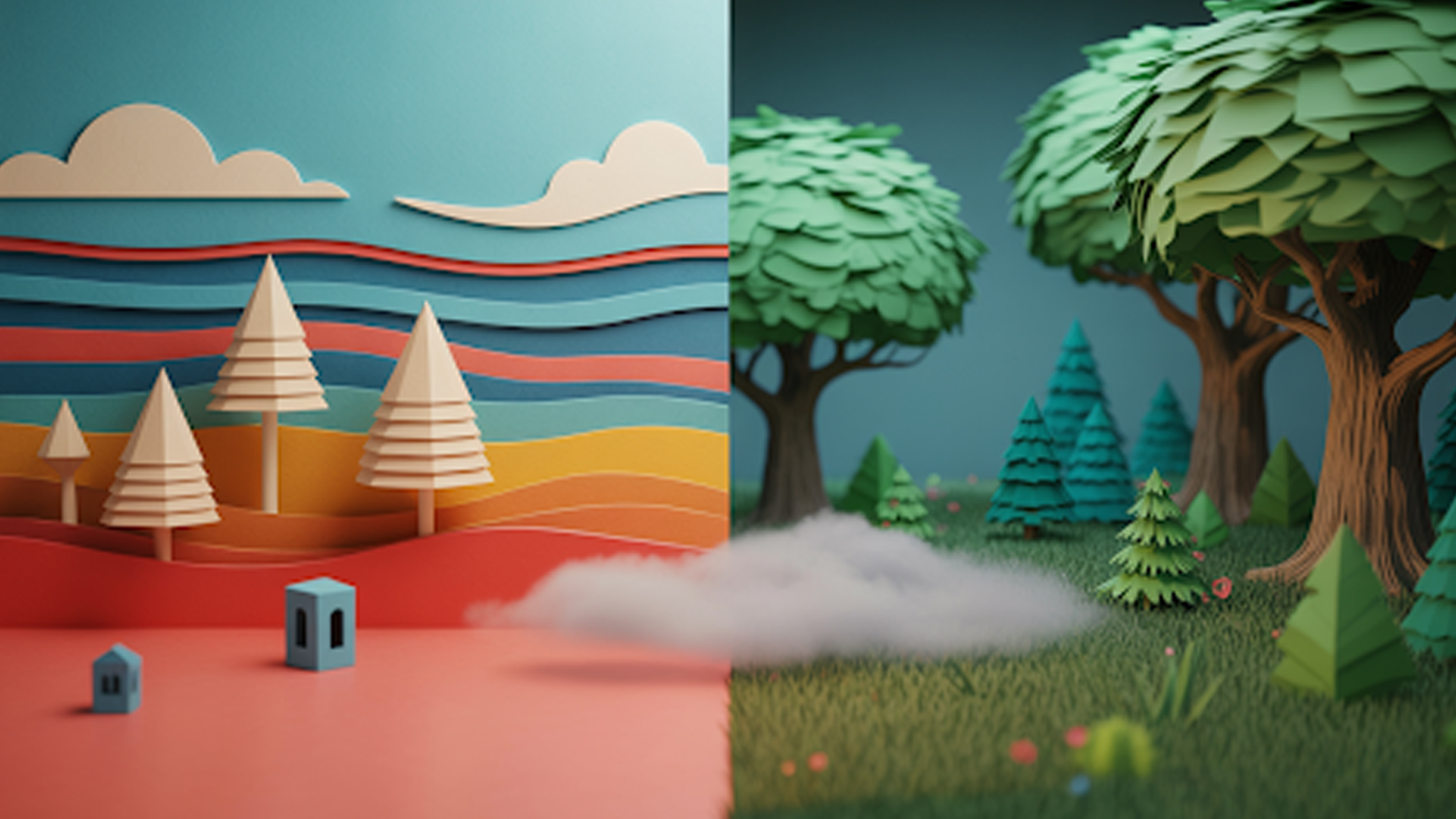It’s a strategic decision to choose the right animation type, which shapes clarity, emotional impact, production time, and budget. To distill complex ideas into memorable visuals, choose wisely; or else you risk overpaying for a result that doesn’t move the needle.
This guide explains the basics of what is 2D animation and What is 3D animation, so you can decide with confidence while choosing an animation type. Also, you’ll see where each style works best, the difference between 2D and 3D animation, and a plain look at 2D vs 3D cost.
What is 2D Animation?
2D animation is drawn on a flat plane. Think of moving illustrations, icons with character, and snappy motion graphics. The usual flow is simple: write the script, sketch storyboards, create designs, build an animatic, animate, and do a clean final pass.
One big benefit is speed. Edits are often faster and cheaper than in 3D. You can also choose a simple or detailed look, depending on your budget. If you want a strong story in a short time, 2D Animation is often a smart pick.
What is 3D Animation?
Three-dimensional animation adds depth and realistic lighting. You can spin the camera, show textures, and explain how things work in space. The common steps include modeling, rigging, texturing, look development, layout, animation, lighting, rendering, and compositing.
3D takes more time up front, but the assets are reusable. Once a product or character is built, you can make new shots from any angle. If you plan ongoing content, 3D Animation can pay off because you reuse the same models across many videos.
Difference between 2D and 3D Animation
| Criteria | 2D Animation | 3D Animation |
| Style | Flat, clean, and easy to read. | Realistic look with depth; the camera can move through space. |
| Workflow | Fewer specialized steps (script → boards → animatic → animation → comp). | Adds modeling, rigging, texturing, lighting, and rendering; needs more planning and sign-offs. |
| Edits & Reuse | Fast to revise for story and on-screen text; new angles may require redraws. | Slower up front, but once assets are built, it’s easy to create fresh angles and versions. |
| Output | Exports quickly to multiple web/social sizes. | Also supports many sizes but often needs longer render time, especially for 4K or heavy effects. |
What are the Cost, Timeline & Production Complexity
Cost. 2D is often the value option at shorter lengths. Prices rise with detailed art and advanced character movement. 3D costs focus on model quality, textures, lighting, and the time needed to render. Sound, voiceover, and music help both styles and don’t add much cost compared to visuals.
Timeline. 2D usually reaches the first draft faster. 3D needs longer setup but makes future versions easier once assets exist.
Complexity.
- 2D: more scenes, more illustration detail, and frame-by-frame work increase scope.
- 3D: higher poly counts, realistic materials, and simulations (cloth, fluids, particles) add time.
If you plan many formats and languages, choose partners who design with reuse in mind. The right animated video services will set up scenes and captions so you can localize and cut down without redoing the whole project.
Which is the Best 2D vs 3D Animation
There is no single “best” choice. Pick the style that serves your goal. Choose 2D if you want clear storytelling, quick turnaround, and a distinct brand look. It is perfect for explainers and education, where understanding matters more than realism.
Choose 3D if you need realism, product accuracy, or a premium feel. For launches or technical demos, using 3D Product Visualization helps people get it fast because they can see shape, surface, and movement in space.
How to Pick a 2D Animation Studio
Look past the showreel. Ask about process and communication. Strong teams explain their steps, share sample timelines, and set clear review rounds.
Before you sign, write a short checklist: your goal, audience, one key message, run time, two or three references, and a deadline. Then speak with two studios and compare how they’d approach it. This makes it far easier to choose the right 2D animation studio that fits your needs, not just your taste in visuals.
Ask how the team handles aspect ratios, captions, and other versions. If you want the most value, confirm that storyboards and animatics are included. This locks the plan before production, saving time and money later.
Where to Find a Great 3D Animation Team
Pick teams that can show you more than the final render. Ask for wireframes, lighting tests, and short breakdowns. This proves they know their craft and build assets the right way.
When you compare options, discuss asset ownership, render approach (offline vs. real-time), and delivery specs. If you need seasonal updates or many product colors, reusable scenes are a big win. You’ll want a partner known for Best 3D animation services and for handing over clean project files when needed.
FAQs
Which style drives better results for product launches?
It depends on the product. If people must see materials, shapes, or moving parts, 3D often works better. If story and message come first, 2D can be faster to produce and easier to watch.
What does a simple production process look like?
Brief and script → storyboards → animatic → design or look-dev → animation → sound → final exports. Clear steps and fixed feedback rounds keep the project moving.
Can I mix 2D and 3D in one video?
Yes. A hybrid approach gives you clarity and depth. For example, use 3D for products and 2D graphics for labels, stats, or UI callouts.
How do I keep revisions from getting out of control?
Lock the script and storyboard early. Set two or three review rounds and use time-coded notes. In 3D, approve layout and lighting tests before full-quality renders.
What files should I receive at the end?
Final videos in needed sizes, clean versions (no burnt-in captions), audio stems, and, when agreed, project files or source assets. We at AnimatedVideos.co also share a simple handover guide so you can create future versions smoothly.
How do I choose quickly if I’m on a tight deadline?
Ask for two related case studies, a high-level schedule for your scope, and a sample feedback plan. A producer-led team such as AnimatedVideos.co can map this out in plain language and give you a realistic path to launch.
What budget signs point to 2D vs 3D?
If you need more minutes for less money, 2D is often better. If you will reuse assets across campaigns or need close-up realism, 3D can return more value over time.
Is custom sound really worth it?
Yes. Voiceover, music, and simple sound effects add a lot of polish. They guide pace and make complex ideas feel easy.
How do I plan for multi-language or many formats?
Write short, clear scripts. Keep on-screen text in layer groups for fast edits. Ask for a delivery list that includes vertical, square, and widescreen. Planning this at the start saves a lot of effort later.
Ready to Launch Your Video? Let’s talk.
If you want a clear plan, fair pricing, and a video that actually works, we can help. Tell us your goal and deadline, and we’ll show you the simplest path: 2D, 3D, or a mix. We’ll outline the steps, timelines, and costs in plain language, with no hidden extras. Reach out to AnimatedVideos.co and let’s turn your concept into a clean, effective video your audience will understand and remember.



